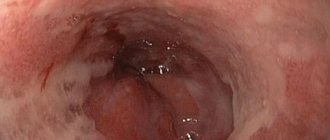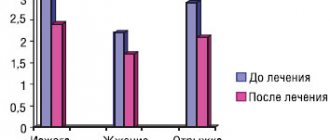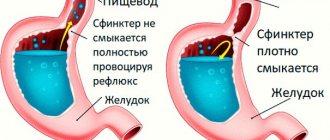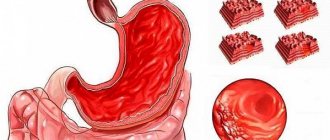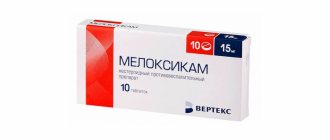Atrophic pharyngitis is a chronic inflammatory disease of the pharynx, which leads to atrophic changes in its mucosa. Mucosal cells lose their functions and gradually begin to be replaced by epithelial tissues. The disease is regarded as precancerous and requires special attention. Leaving the pathology without treatment is strictly prohibited, as this greatly increases the risk of pharyngeal cancer.
With atrophic pharyngitis, degradation (death) of mucosal cells occurs, causing it to become significantly thinner and cease to function fully. When the pathological process reaches the last stage, the secretion is so impaired that it becomes especially viscous, accumulates on the walls of the pharynx and forms crusts. After they are removed, a wound most often remains on the tissue, which bleeds slightly or moderately. Large vessels are rarely damaged, and heavy bleeding also does not occur often. The disease almost never occurs in children.
Atrophic pharyngitis requires predominantly supportive treatment, since in most cases it is impossible to restore the damaged mucosa. With therapy, the likelihood of complications of the disease, which can pose a threat not only to health, but also to life, is reduced. The longer a patient refuses to seek medical help, the greater the risk of cancer.
Differences from the subatrophic form
Subatrophic pharyngitis, the symptoms of which are minor, is the initial stage of atrophic pathology. There is no thinning or irreversible change in tissue yet. Subatrophic pharyngitis is dangerous because pronounced symptoms do not always appear, which is why many patients do not seek timely medical help. As a result, the start of therapy occurs at a time when the mucous membranes are already seriously damaged and cannot recover, and as a result, treatment is only supportive.
Physiotherapeutic procedures
Depending on the symptoms and treatment in adults, the appropriate one is selected. Many patients are interested in how to treat pharyngitis and how effective physiotherapy is.
Typically, hardware procedures are used as an additional treatment method. They are prescribed during the period of remission of the disease. Their use allows you to restore the mucous membranes of the larynx to their natural state. In addition, they eliminate tissue swelling and have bactericidal properties. Regular procedures allow you to restore the capillary network and increase the body's immune defense.
The following procedures are particularly effective:
- Use of ultrasonic and high-frequency currents (UHF and ultrasound).
- Application of magnetic therapy and infrared laser techniques.
- Inhalations provide inhalation of medications (glucocorticosteroids) or medicinal decoctions (eucalyptus, lavender vapors).
- The use of UF (ultraviolet irradiation of the mucous membrane) is particularly effective.
- Electrophoresis ensures rapid delivery of an anesthetic or therapeutic agent directly to the site of inflammation.
Causes
To provide correct therapy, it is very important to establish the causes of the disease. If the factor causing the problem is identified and eliminated, the patient's condition will improve. Doctors identify the following as the main provocateurs of the development of atrophic processes in the pharyngeal mucosa:
- long-term residence in areas with very polluted air;
- living in a hot, dry climate - in such conditions, mechanical drying of tissue occurs, which triggers the atrophic process;
- smoking in active or passive form - toxins from nicotine lead to the destruction of cells in the mucous membrane of the pharynx and cause severe damage to it, triggering the degenerative process;
- regular consumption of alcoholic beverages, even light ones;
- pathologies of the nose, which force you to constantly breathe through the mouth - because of this, the mucous membrane is not only exposed to cold air and a large number of pathogens, but also mechanically dries out;
- disturbances in the functioning of the immune system that do not allow it to adequately resist inflammatory agents or cause its aggression against body tissues;
- the presence of foci of chronic inflammation in the pharynx, nasal cavity or mouth. They cause a weakening of local immunity and constantly irritate the mucous membrane, thereby causing the process of its thinning;
- prolonged unauthorized use of nasal vasoconstrictors - these drugs, flowing with mucus along the back wall of the pharynx, lead to its damage;
- surgical intervention on the pharynx - it is impossible to predict the appearance of the disease as a consequence after surgery, since it is usually associated with the individual characteristics of the body;
- Vitamin A deficiency in the body - when it affects the mucous membrane and it ceases to function fully. This vitamin deficiency causes drying out of epithelial and mucous tissues, causing many atrophic processes;
- throat injury - against its background, the process of replacement of mucosal cells with connective tissues gradually begins, due to which its full functioning becomes impossible;
- severe burn of the throat or chronic minor burns of the mucous membrane due to regular consumption of very hot drinks or food - damaged tissues with a severe burn cannot be restored to their original state; and if the throat injury is permanent, then without having time to heal, it receives further damage, which causes atrophy;
- chemical damage to the throat - after which the mucous membrane usually cannot recover properly and becomes thinner, after which even a small irritant leads to the onset of the atrophic process.
Also, quite often the disease appears as an occupational one when working for a long time in hot shops or in chemical production. In this case, it is necessary to constantly monitor health and provide supportive therapy to prevent the development of the atrophic process in the mucosa. Regardless of the cause of its appearance, atrophic pharyngitis has similar symptoms.
Symptoms of pharyngitis
General signs of inflammatory damage to the mucous layer of the pharynx are:
- sore and dry throat;
- pain when swallowing;
- sensation of a foreign body in the throat;
- nonproductive cough (without clearing the throat).
In the acute form of the pathology, all these signs are more intense than in the chronic form. Pain from the throat can radiate to the ear, cheekbone and lower jaw. Also, most often there is an increase in temperature within 38 ° C, weakness, lethargy and fatigue appear. With an active infectious process, enlargement of the cervical and parotid lymph nodes is often observed. Symptoms increase very quickly, reaching their peak within 12 hours after the first illness.
Chronic pharyngitis is characterized by periods of exacerbation and remission. In remission, the patient feels relatively well, only discomfort in the larynx persists. Patients complain of a lump in the throat, causing the desire to cough. This is caused by mucus that accumulates on the back wall of the pharyngeal tube and feels like a foreign body. Patients try to get rid of this feeling by coughing slightly. A classic example is a smoker's cough.
In the acute phase, chronic pharyngitis resembles acute pharyngitis, but the manifestations are usually not so pronounced. Unlike the acute form, there is no increase in temperature and no significant deterioration of the condition. But the chronic nature of the disease leads to frequent acute respiratory viral infections, constant congestion of the nasal passages, and, consequently, to respiratory disorders, especially during sleep.
Which doctor treats
Treatment of the disease is carried out by an otolaryngologist, and in his absence, by a therapist who, being a general practitioner, is quite competent in this matter. If there is a suspicion that a malignant process has begun to develop in the pharynx, then an oncologist is involved in treatment. He examines the patient for the presence of cancer cells and, if they are detected, takes full charge of the treatment.
In rare cases, a gastroenterologist, endocrinologist or allergist may be involved in treating the problem. As complications of the disease develop, the circle of specialists who will deal with therapy expands significantly.
Possible complications
Complications of pharyngitis occur due to the lack of proper treatment and untimely contact with an ENT doctor.
A careless attitude towards the disease can lead to other unpleasant diagnoses and conditions:
- chronic pharyngitis;
- peritonsillar abscess;
- laryngitis;
- tracheitis;
- bronchitis;
- pneumonia;
- otitis;
- lymphadenitis;
- complication on the heart, kidneys, joints (with bacterial pharyngitis).
Diagnostics
The main methods for diagnosing the disease are collecting anamnesis and performing pharyngoscopy. However, such a diagnosis is not enough to determine the cause of the pathology. After the diagnosis is made, the doctor refers the patient for examinations in order to identify the factors that led to the pathology. If you look at a photo of a sore throat with atrophied mucous membrane, it will help even a non-specialist to visually recognize the pathology in life.
Without fail, a person is sent for a consultation with a gastroenterologist, since it has been precisely proven that most of the atrophic pathologies of the pharyngeal mucosa develop due to the reflux of acid from the stomach into the esophagus. Sometimes the patient himself does not notice this problem, and only a specialist can determine it.
If no disorders of the gastrointestinal tract are established, a blood test for hormones and a smear to identify pathogenic microflora are indicated. In addition, a referral may be given for an allergy test.
When there is concern that the patient has begun to develop cancer, a biopsy of throat tissue is performed. It can be performed independently or in parallel with pharyngoscopy. Thanks to the procedure, a malignant process can often be detected at an early stage, when therapy is still possible.
Treatment
To cure chronic subatrophic pharyngitis, it is recommended to drink plenty of warm water for the purpose of detoxification.
A gentle diet with limited hot, cold, spicy, salty and sour foods is also very important.
Drug therapy is aimed at eliminating the causative agent of the disease:
- If it is a virus, then local treatment is carried out - gargling with solutions of furatsilin or sea water, irrigating the pharyngeal mucosa with aerosols (Lugol, Miramistin), performing warm inhalations, using lozenges (Faringosept, Strepsils, Septolete).
- If a bacterial infection is detected, antibacterial drugs are prescribed. Treatment is quite long and can take more than 10 days, and even after that some symptoms may still remain. After all, the body needs enough time for ulcers and other oral tumors to heal.
Homeopathy for subatrophic pharyngitis
Subatrophic pharyngitis can be cured with homeopathy.
It is aimed at improving the health of the entire body as a whole, and not just to eliminate the symptoms of a specific disease. During homeopathy, only one medicine, chosen by the homeopathic physician, is allowed to be used in a minimum dose. It must be taken into account that it is forbidden to combine coffee, sour and spicy foods, as well as alcohol with homeopathic medicines. Medicines should be stored in a cool, dark place. You can take them both before and after meals.
Be sure to follow a special diet during homeopathic therapy. It involves taking only fresh vegetables and fruits, as well as meat. It is recommended to exercise and maintain a healthy lifestyle.
Application of traditional methods
in most cases, a combination of traditional methods with non-traditional ones is required for therapy to be more successful and effective
- Gargling. Take one glass of water, 1 tsp. salt, 1 tsp. baking soda and 1-2 drops of iodine. All ingredients are mixed, then gargle until all the liquid is gone. It should not be swallowed; the water should be spat out.
- Inhalation of potato fumes. Boil one large potato, place it in a deep bowl, and bend your head over it. Cover the top with a towel and inhale the steam. Due to this, breathing becomes easier and phlegm comes out.
- Regularly eating garlic or onions. This remedy is effective not only in treatment, but also in the prevention of many diseases. It helps strengthen the human immune system.
- Regular intake of warm milk with honey. This product warms the throat and helps reduce inflammation. You cannot add honey to hot milk, as this will reduce its properties.
Subatrophic pharyngitis is not so scary. With proper, timely treatment, you can be completely cured. As with any other disease, treatment for this disease should be carried out comprehensively. Along with taking antibiotics, the patient should radically change his diet - eliminate everything spicy and salty, completely give up smoking and alcohol (at least for the duration of treatment) and combine taking the medication with a healthy diet.
Treatment
Treatment of the pathology should begin when the first symptoms appear, because then the likelihood of maintaining a healthy throat is much higher. For treatment, conservative methods are used (physiotherapy and medications), and some supplement them with traditional recipes, but they must be approved by a doctor.
Conservative therapy
Conservative methods of treating atrophic pharyngitis include physiotherapy and medications. The first ones are designed to improve blood flow in the throat area in order to speed up the regeneration of cells in the mucous layer; some of them also help clear the throat of mucus clots. Drug therapy is necessary to eliminate inflammation, infection, pain relief, and local disinfection. The list of physical procedures includes:
- inhalation using a solution of Furacilin or Gentamicin, sometimes using regular saline and mineral waters (Borjomi, Narzana, Naftusya); more about inhalations →
- UHF, UV, laser irradiation.
The drug component of therapy includes:
- preparations for rinsing (Furacilin, Chlorophyllipt, Dioxidin, Rotokan);
- sprays for local treatment (Chlorophyllipt, Lugol, Kameton, Hexoral);
- anti-inflammatory drugs based on ibuprofen (Ibuprofen, Nurofen, Mig);
- antibiotics (the class of antibacterial drugs is selected individually after receiving the results of bacterial culture of a throat smear); more about antibiotics for pharyngitis →
- painkillers and disinfectant lozenges (Septolete, Chlorophyllipt, Falimint, Septogal, Decathylene, Dekasan).
Traditional methods
Traditional methods of therapy can only be an addition to the main treatment. Home help for atrophic pharyngitis involves using a diluted tincture of propolis or calendula (1 tsp per glass of water), a decoction of chamomile and nettle or a salt solution (1 tbsp per glass of water) to gargle. Teas made from medicinal herbs (breast milk, chamomile, lemon balm, nettle, calendula, sea buckthorn, rose hips) can also help.
